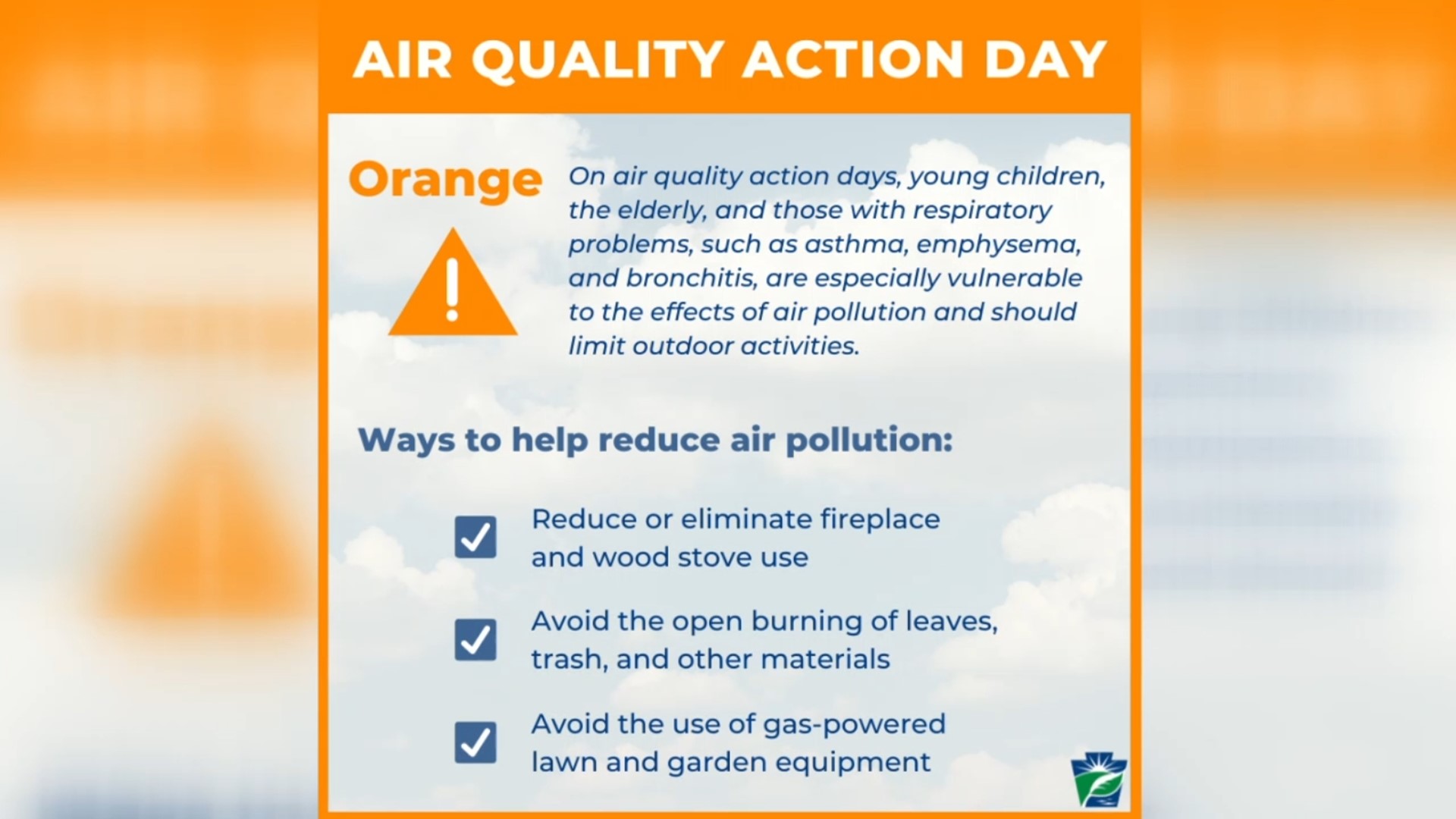HARRISBURG, Pa. — The Pennsylvania Department of Environmental Protection declared a Code Orange Air Quality Action Day on Thursday for the Susquehanna Valley, which includes Cumberland, Dauphin, Lancaster, Lebanon and York Counties.
The announcement comes as southcentral Pennsylvania continues to struggle with air quality and pollution, particularly from fine particle matter.
Those who live in or move to the area appreciate the idyllic, rural scenery. Many, though, are surprised to learn the scenery doesn’t necessarily come with clean country air.
“Southcentral Pennsylvania for fine particle pollution is one of the areas in the Eastern United States that significantly shows up among the worst,” said Kevin Stewart, director of environmental health at American Lung Association of the Mid-Atlantic.
Some of the pollution that forms fine particulate matter is produced in the area. Sources include vehicle exhaust, industrial and power plant emissions, agricultural dust and even wood-burning stoves.
One major source of soot is the Brunner Island Power Plant in York County.
Other pollution is blown in from nearby areas.
“We have not only our own pollution that we’re generating, but we’re downwind from significant sources like the Baltimore-Washington I-95 corridor,” Stewart said.
Southcentral Pennsylvania’s geography is also to blame. A phenomenon called air inversion causes cold air to linger at ground level while warm air passes higher up. Air inversion prevents particle buildup from blowing away. It occurs most often in the winter.
These factors add up to years of poor air quality. In the 2022 American Lung Association’s State of the Air report, Lancaster County got an “F” for fine particle pollution, with an average of 13 Code Orange days per year.
Since 2021, Lancaster City moved off the report’s list of the worst 25 cities in the country for air pollution, but only because other cities’ air quality declined faster. In fact, Lancaster’s air quality actually got worse.
Code Orange level is defined as “unhealthy pollution levels of pollution for sensitive groups of people.”
“Pretty much what that means is what we’re going to be seeing is a higher amount of very fine particulate matter. It’s also in concentrations that could potentially cause some health issues in people, especially at-risk communities,” said Neil Shader of the Pa. DEP.
People at risk of health problems related to air pollution include:
- people with lung diseases, such as asthma, chronic bronchitis, emphysema, and chronic obstructive pulmonary disease
- infants and young children
- people who work or exercise outdoors
- adults over 65
- people with a cardiovascular disease
- people in poverty; people who lack access to health care
- people who smoke or are exposed to second-hand smoke
- people working in occupations where there is high exposure to contaminated air
- people who spend a lot of time near busy roadways
DEP suggests those groups of people limit outdoor activity on Code Orange days. Officials also advise against unnecessary burning of wood or trash, as well as the use of gas-powered lawn equipment.

